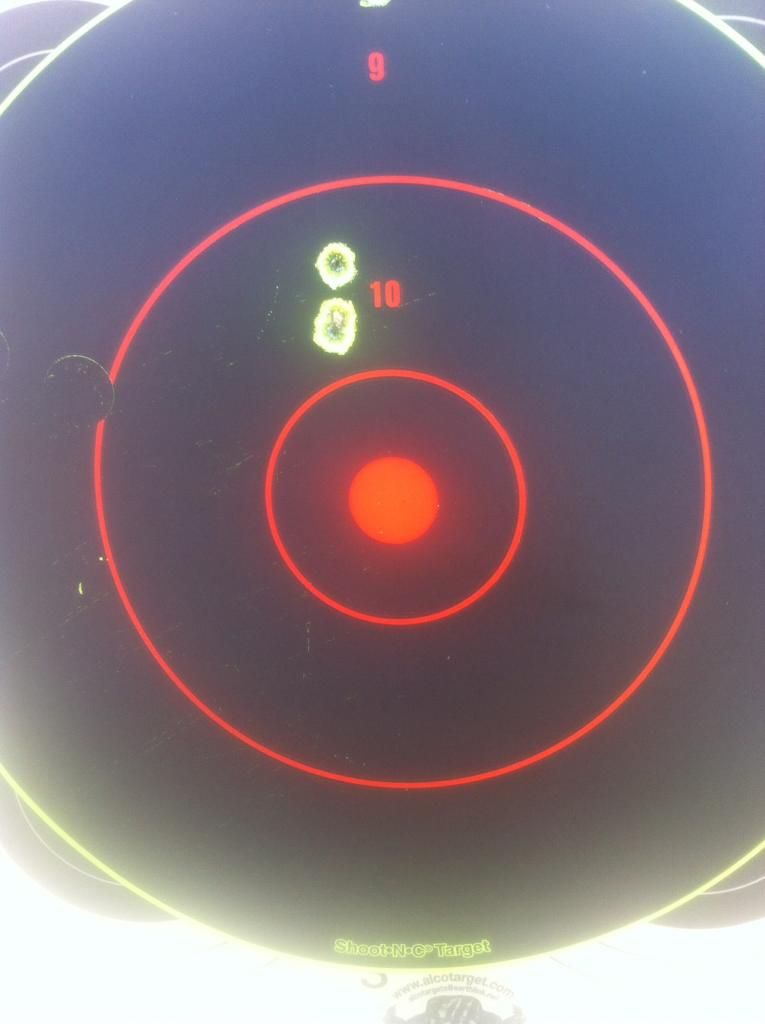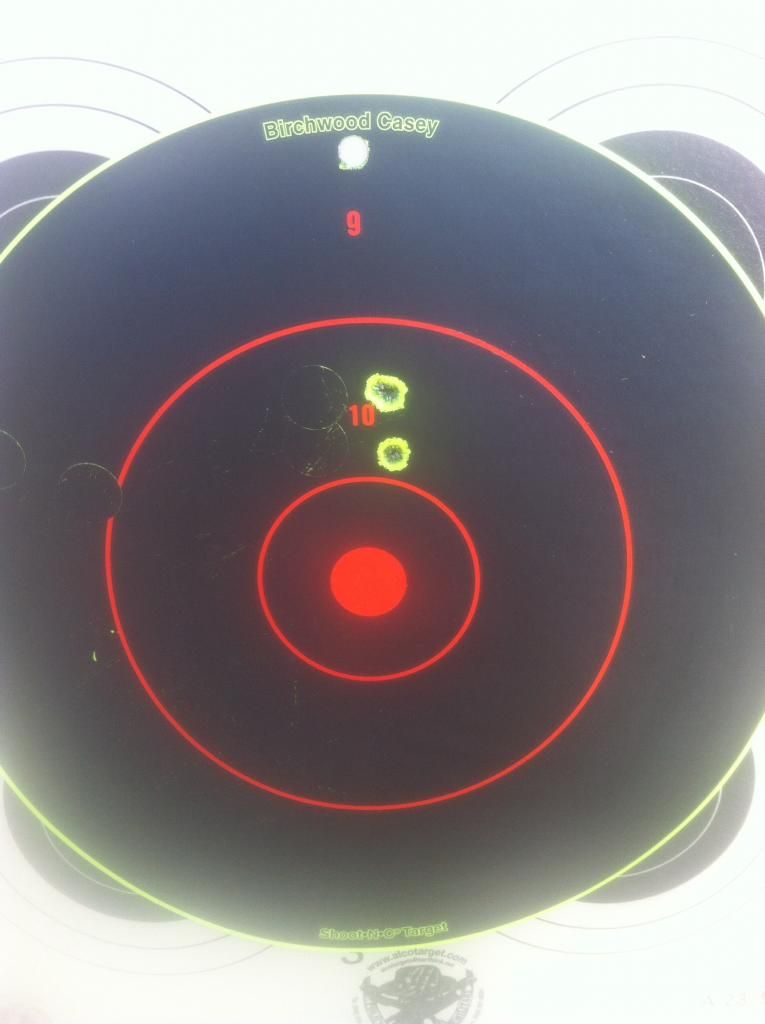I shoot a Ruger M77 Mark II in 30-06 with a Leopold VX-1. It likes Barnes Vortex 168 grainers. The picture is of 100 yards and I'm shooting from a lead sled. The first and third shot are together and the second shot is just above. Do you think if I float the barrel, the second shot would be in with the others? Or could it make it worse by removing the pressure point?



